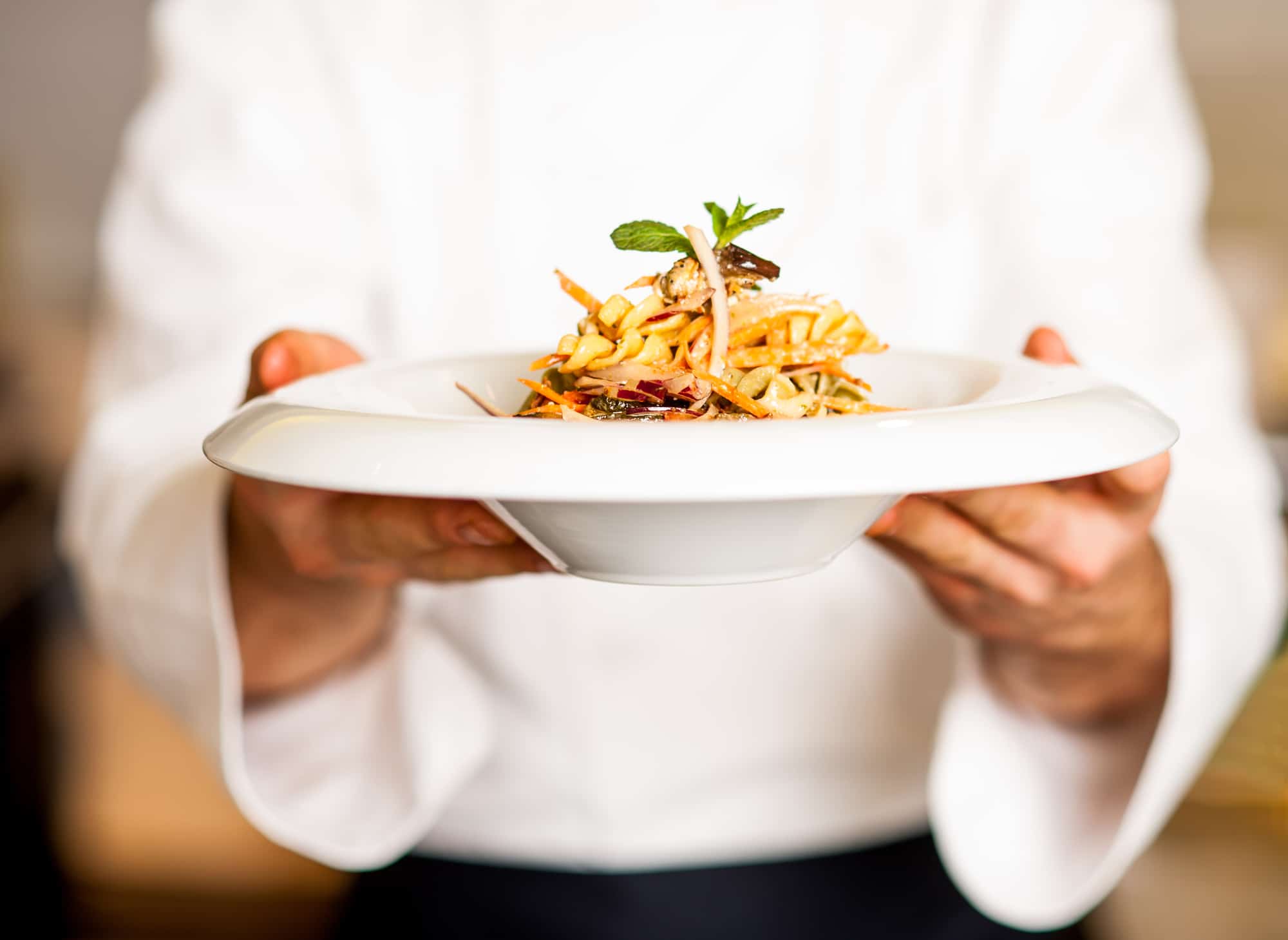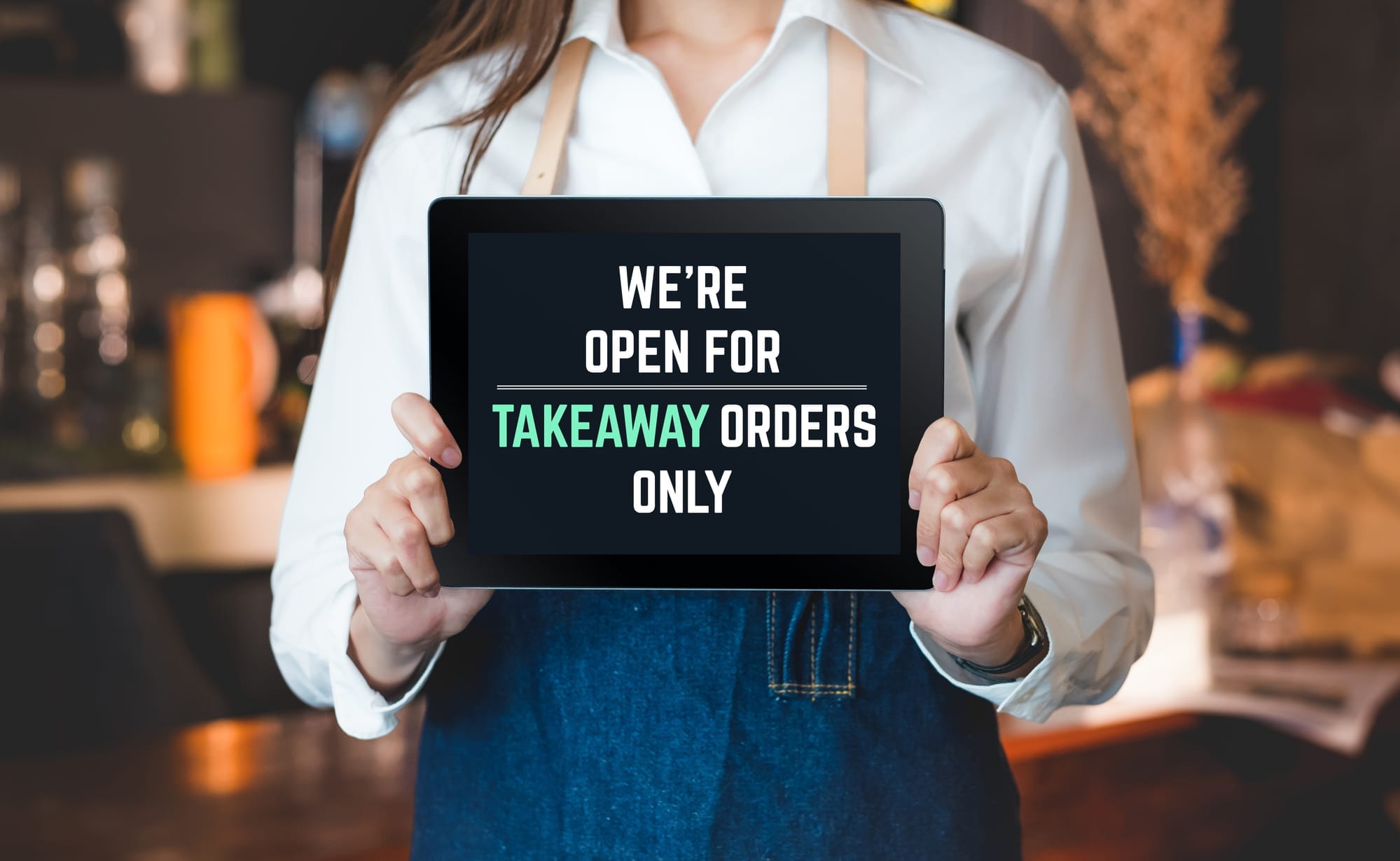This SWOT analysis for restaurants offers a thorough evaluation of the state of the restaurant industry during the pandemic and the key to staying profitable.
In this SWOT analysis for restaurants, you will find a thorough evaluation of the state of the restaurant industry during the pandemic. SWOT analysis is a framework you can use for an unbiased evaluation of a situation, a goal, or an outcome.
So, the first step in conducting a SWOT analysis is defining the situation, goal, or outcome. A relevant outcome for people in the restaurant business is staying profitable. The next step in SWOT analysis is determining the strengths, weaknesses, opportunities, and threats linked to the outcome. But remember - in SWOT analysis, these terms have specific meanings that are different from their commonly understood meanings. Let's look at these specific meanings.
- Strength: A strength in SWOT analysis is an internal factor helping restaurant owners achieve the outcome.
- Weakness: A weakness, however, is an internal factor preventing restauranteurs from achieving the outcome.
A quick word; internal factors are circumstances that the restaurant management has significant to complete control over. In other words, these are matters that are mostly in their hands. Effective management of these internal factors creates strengths. Mismanagement of these factors creates weaknesses.
- Opportunity: An opportunity - the 'O' in SWOT - is an external factor supporting restaurants in staying profitable.
- Threat: A threat is an external factor that blocks restauranteurs from achieving the outcome.
This is important - external factors are situations over which the restaurant management has little to no control over. You can think of them as conditions outside their influence that may benefit or handicap them.
Now that you understand the specific interpretation of these terms, let's conduct a SWOT analysis for restaurants.

What are restaurants' major strengths?
- Quality of Food: Health, hygiene, taste, and cuisine are elements completely under a restaurant’s control. To ensure profitability, maintaining high standards across these areas is critical. Although this may be a challenge, patrons recognize and reward restaurants they can rely on to deliver a great value for their money.
- Customer Service: Attracting patrons, serving food, and handling complaints involve human to human interaction. Empathy, kindness, and competence enrich these interactions. Through delightful customer service, restaurants can make a mark for themselves, attract patrons, boost income, and make profits in a crowded and competitive industry. And the best part is that maintaining high-quality customer service is completely within the restaurant management's control.
- Influencer Marketing: Marketing the quality of food and of the delightful customer experience are vital to ensuring a steady revenue stream. Using local influencers to promote the restaurant within the community yields great results. People are likely to act on the marketing information they receive if the information comes from people who hold sway or influence in the community.
- Local Search Optimization: The "near me" qualifier is gaining a lot of traction in online searches. Restaurant businesses that optimize their website and online profile for local search terms stand a high chance of being discovered in online searches. Along with the ratings from high-quality food and incredible customer experience, local search optimization can drive a flood of patrons to restaurants.
- Packed Meals: Limitations on seating capacity along with the rise of food delivery services has boosted the popularity of packed meals. Packed meals may take many forms such as combos, take-aways, or to-go. Offering these services along with in-person dining can transform a restaurant's cashflow for the better and keep it profitable.
What are some of the restaurants' weaknesses?
- Safety Concerns: Re-opening a restaurant safely requires restaurants to invest money into partitions, sanitization equipment, filters, air purifiers, and personal protective gear. However, restaurant businesses need to keep these expenses in check. They need to spend just enough to reassure patrons and employees but not so much that they can't remain profitable.
- Payroll Management: The pandemic forced many restaurants to reduce pay or layoff staff. The payroll may account for 20 to 30 percent of the restaurant's total expenses. However, such measures have a severe impact on the restaurant's operations.
- Cashflow: With indoor dining severely restricted, restaurant owners are struggling to earn enough to meet operating costs. To survive the pandemic, restaurants must look at additional ways to generate revenue independent of traditional indoor dining. Although making this transition is completely under the restaurants' control, it's no easy task.
- Sanitization and Decontamination: Setting aside the cost of the sanitization and decontamination equipment for a moment, the operational challenges are still relevant. Keeping the kitchen and dining spaces virus-free requires time and effort. The problem is that restaurants, which are already short on staff, find it challenging to run the business while meeting the safety norms.
- Exposure to COVID-19: Apart from government regulations, the extent to which restaurants flouting the COVID-19 norms or follow them is totally within the restaurant management's control. On one hand, restaurants serious about reducing exposure need to spend more on ensuring safety. On the other hand, restaurants that aren't too cautious about being exposed to the virus stand the risk of the fallout from an infection.
What are some opportunities for restaurants?
- Food Aggregators: Food aggregators have made browsing for dishes, placing an order, and delivering food a seamless experience. These services have opened restaurants to a wider audience. Restaurant businesses that have embraced this opportunity are now serving many times the number of customers they could have served traditionally.
- Government Stimulus: Early this year, people started receiving the long stimulus check. The influx of real money into people's pockets has created an uptick in the restaurant business. However, this is only an indirect benefit.
- Employment Opportunity: With many people losing their jobs due to the economic recession the pandemic created; unemployment has hit record numbers. The number of job seekers far exceeds the number of jobs. This has created a situation where restaurants open to hiring can now hire people at a lower cost.
- Vaccination: Vaccines such as Pfizer, Moderna, and Johnson and Johnson are showing high efficacy. As the proportion of vaccinated people in the population increases, governments will proportionally decrease the restrictions placed on indoor dining. This will help improve profitability. But there's nothing restaurants can do to impact the speed at which the population is vaccinated.
- Transition to Digital: Measures to curb the spread of the virus has also limited movement and travel. Stepping outside has become unsafe. But restricting the population to their homes has accelerated the shift to digital platforms. Everything from education to medical care shifted to online platforms. The restaurant business is no exception. And this trend is here to stay. So, it would be a smart thing for restaurant managers to start thinking of creating and using the digital space for their growth.

What are the biggest threats to restaurants?
- Lockdown Measures: According to an article on Forbes, 53% of the restaurants on Yelp are listed as "permanently closed" as a result of lockdown measures. The National Restaurant Association earnings fall $240 billion below its projections for the year 2020.
- Social Distancing Norms: Gov. Andrew Cuomo, Governor of New York, announced that restaurants could resume indoor dining at 25% capacity from Feb 14. The restriction on seating capacity ensures adequate social distancing. But reopening at a fourth of the total capacity makes running the business unsustainable. So, many restaurants are opting to remain closed than to re-open at 25% capacity.
- Government Support: According to the World Economic Forum, it would be hard for the restaurant industry to bounce back without any support or assistance from the government. However, in many cases, the compensation - if any - has been late, inadequate, or difficult to distribute.
- New Viral Strain: Variants of the virus is causing concerns among the medical community because the vaccines may not be as effective on the new variants as they are on the old strain. The emergence of these mutant strains has once again stirred the waters just when things were starting to calm.
- COVID-19 Fears: The looming uncertainty regarding the direction in which the pandemic is heading and the lack of control authorities have over its spread has left people anxious and afraid. Misinformation or lack of information further complicates these matters. Restaurant owners cannot impact this attitude on a large scale. As long as this cloud of uncertainty exists, people will not be open to visiting restaurants in numbers large enough to make a difference.

SWOT Analysis for Restaurants: Conclusion
Let's recap. The outcome for our SWOT analysis for restaurants is staying profitable. From our SWOT analysis, we can see that providing high-quality food and customer service, along with effective local-level influence marketing is one of the key strengths for restaurant owners.
At the same time, running the business while keeping the staff and patrons safe from COVID-19 is the biggest weakness hindering the restaurant industry.
But unlike safety measures, which restaurant owners have complete control over, restaurant owners have no control over government-imposed measures that are crippling the restaurant business. This makes these safety regulations the biggest threat for restauranteurs.
However, the COVID-19 climate has brought changes in the way people interact with restaurants. This shift has opened many new avenues - such as food aggregators services, digital transformation, and government stimulus - to grow. Restaurants jumping into these opportunities will benefit from the "early-mover" advantage.
Overall, COVID-19 caused a complete overhaul of the restaurant business. Even in the post-pandemic era, trends created in the online space are likely to continue. Therefore, the key to staying profitable in this situation is adapting to these trends.
If you found this SWOT analysis for restaurants informative, you would love other SWOT analysis examples in our collection, where you'll find SWOT analysis for KFC, Mcdonalds, and Subway restaurants among others. Also, if you want to learn how to perform a SWOT analysis on your own, you can check our article on what is SWOT analysis and the SWOT analysis templates.


